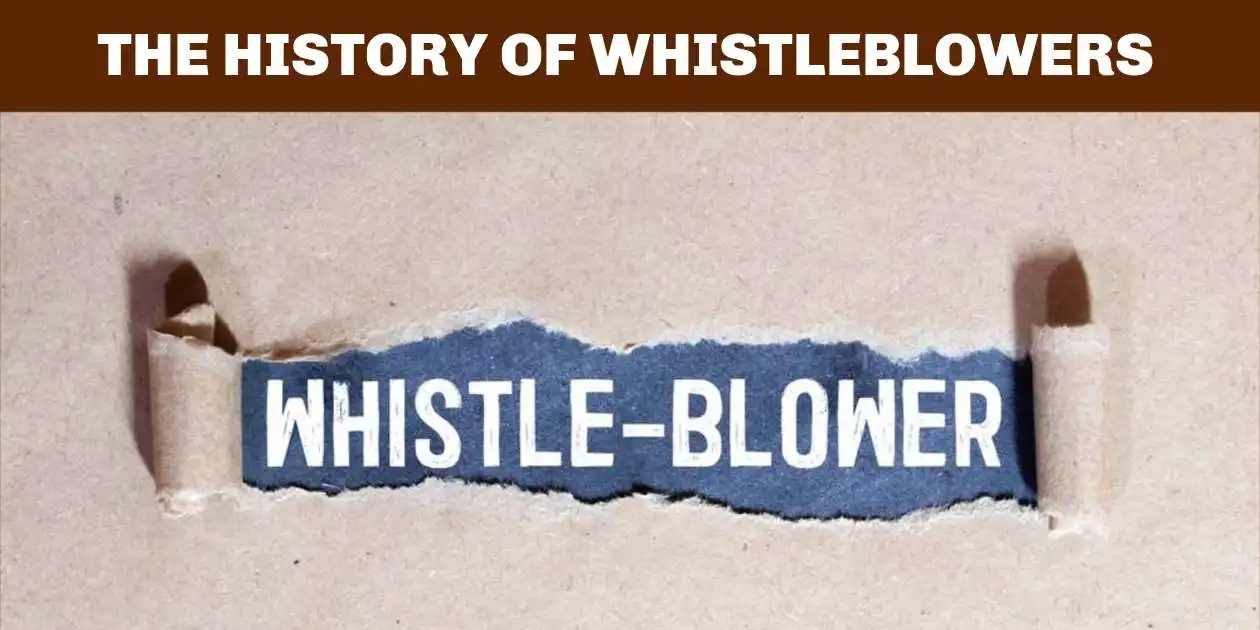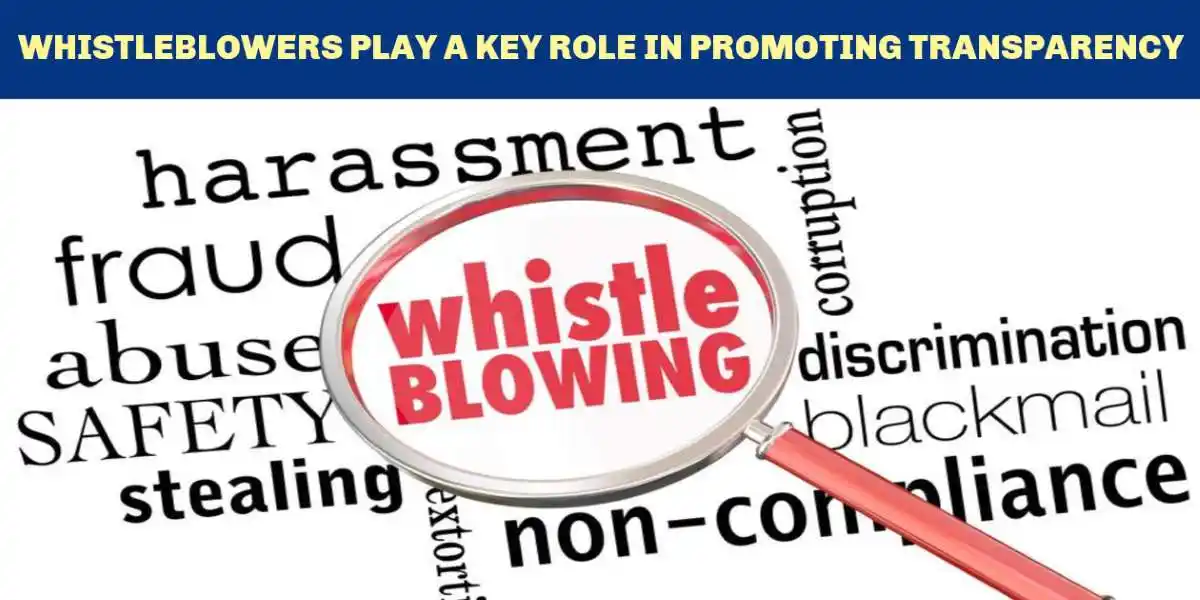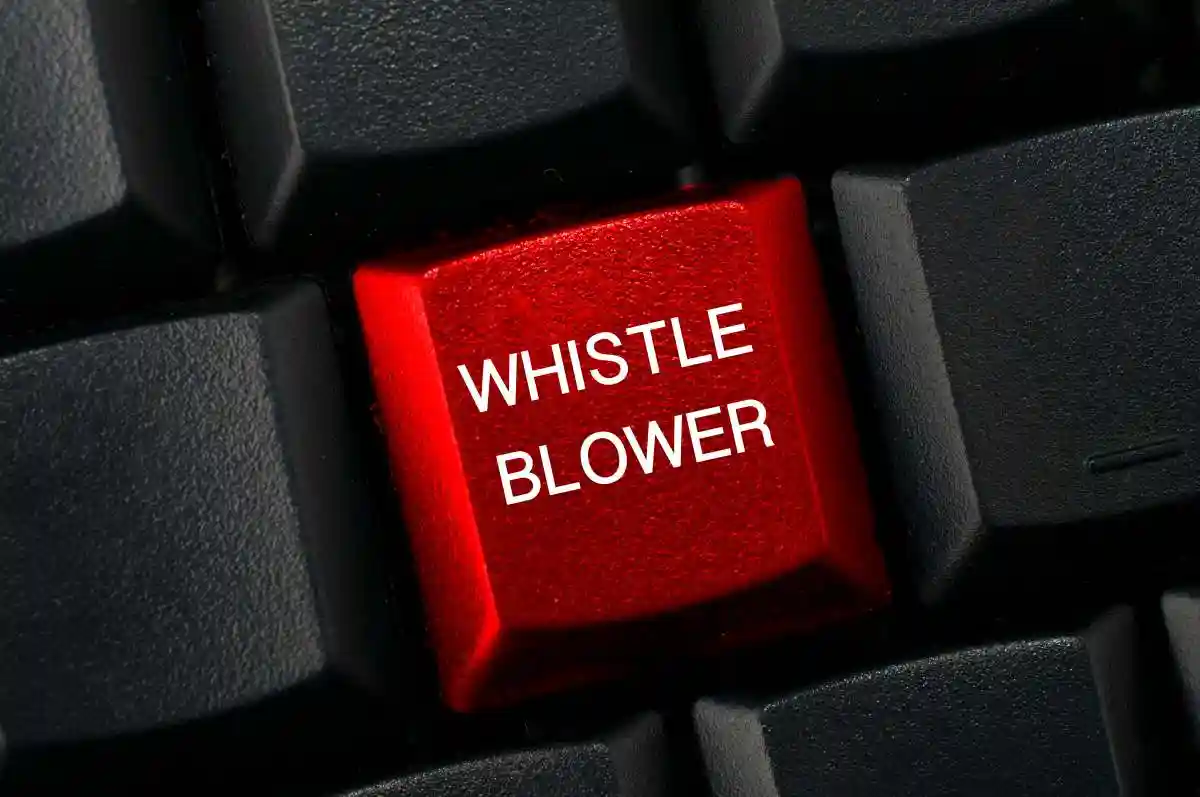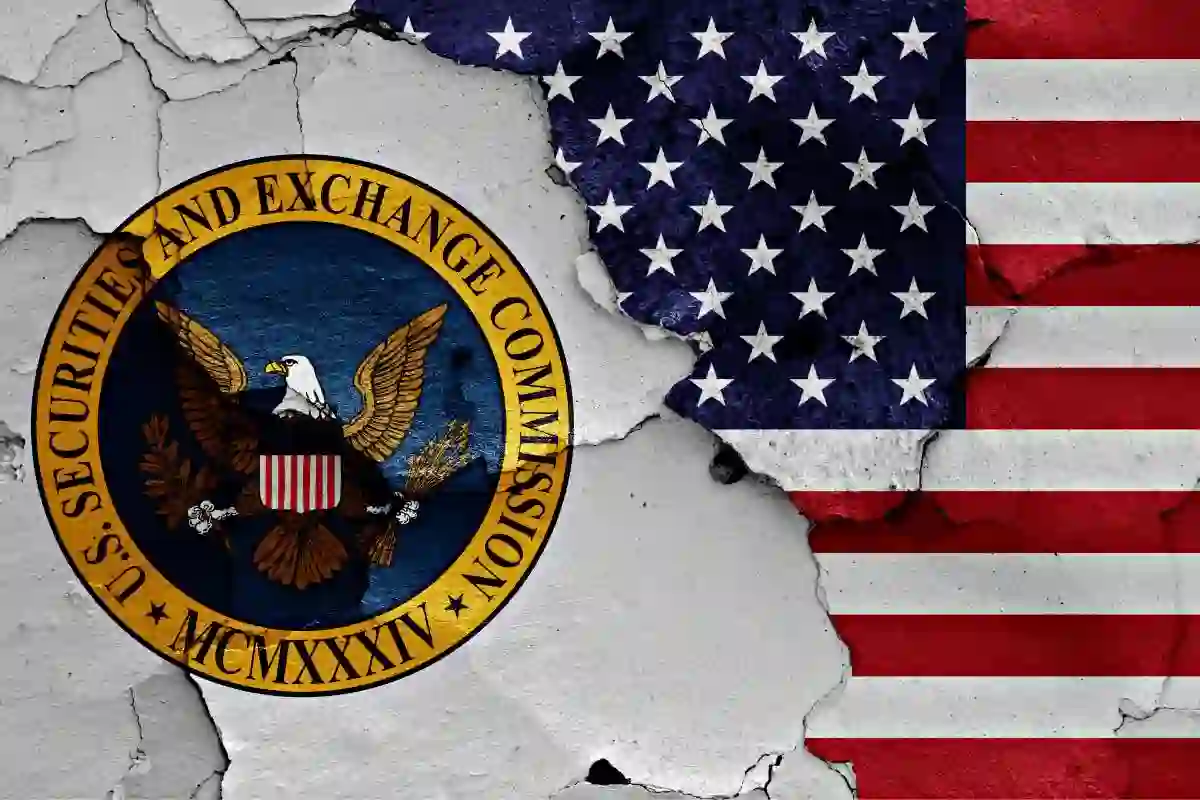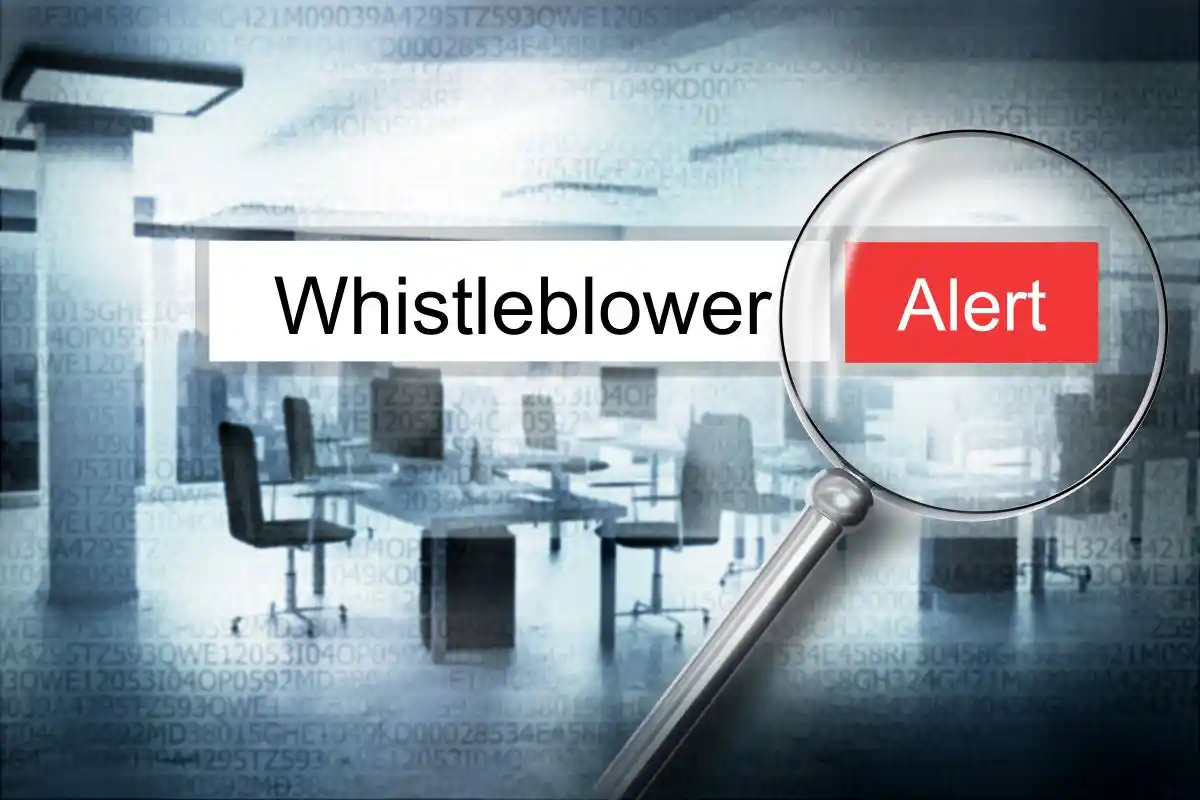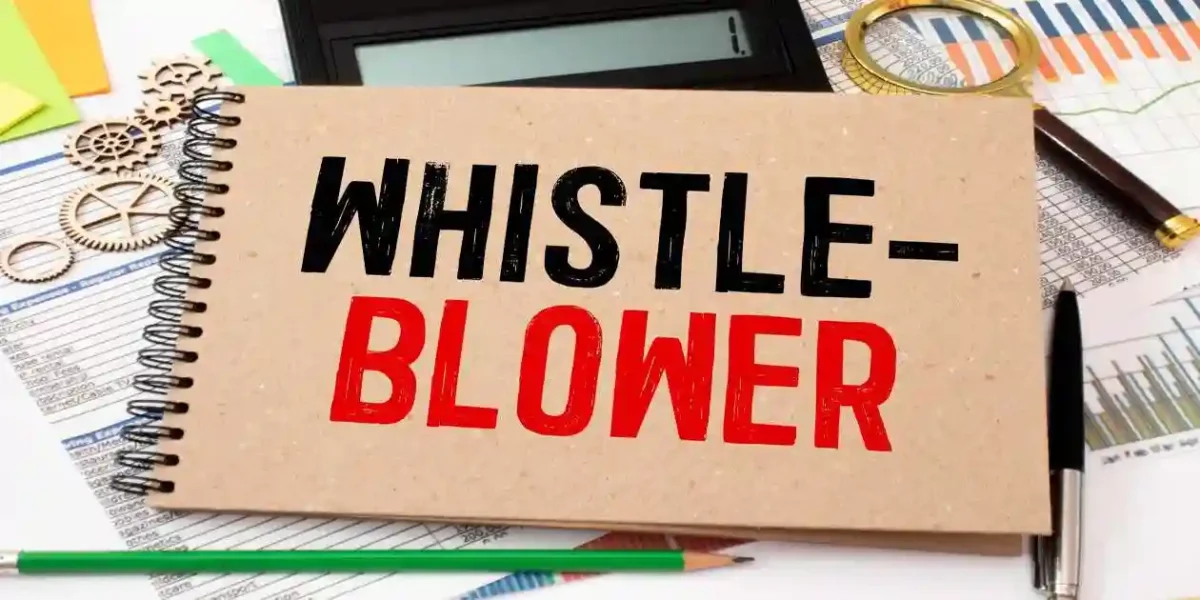Introduction to the the History of Whistleblowers
The History of Whistleblowers: Is one of courage, ethics, integrity and of the highest character to what they believed what the ethical and responsible thing to do, notwithstanding the real and serious resurrections.
Whistleblower protection: cornerstone of American democracy far earlier than most Americans realize. Ten naval officers demonstrated extraordinary moral courage when they alerted the Continental Congress to serious misconduct by Commodore Esek Hopkins in 1777. This pivotal act of truth-telling triggered a landmark response—the Continental Congress unanimously enacted America’s first whistleblower protection law in 1778.
Historical Pattern: Throughout more than two centuries of American history, individuals have consistently risked their careers, professional reputations, and personal safety to expose corruption within government institutions and corporate enterprises. President Abraham Lincoln recognized the critical importance of these truth-tellers when he signed the False Claims Act into law in 1863, establishing a legal framework that continues to protect whistleblowers today.
Transformative Impact: These courageous individuals have repeatedly altered the trajectory of American history through their disclosures of institutional wrongdoing. Daniel Ellsberg’s release of the Pentagon Papers in 1971 fundamentally changed public understanding of government transparency, while Cynthia Cooper’s investigation uncovered approximately $3.8 billion in corporate fraud at WorldCom in 2002, representing one of the largest accounting scandals in American corporate history.
Broad Enforcement: The consequences of these revelations extend far beyond individual cases of misconduct. The False Claims Act applies specifically to whistleblowers reporting illicit use of federal funds across multiple sectors, including Medicare fraud, government contractor fraud, and environmental violations. Congress expanded these protections in 2006 by enacting additional whistleblower legislation designed to enable individuals to expose tax fraud, underpayments, and other violations of internal revenue law.
Essential Knowledge: This examination reveals the remarkable untold stories of whistleblowers who fundamentally changed American institutions, the evolution of legal protections designed to shield them from retaliation, and the ongoing challenges they face when pursuing truth and accountability against powerful interests.
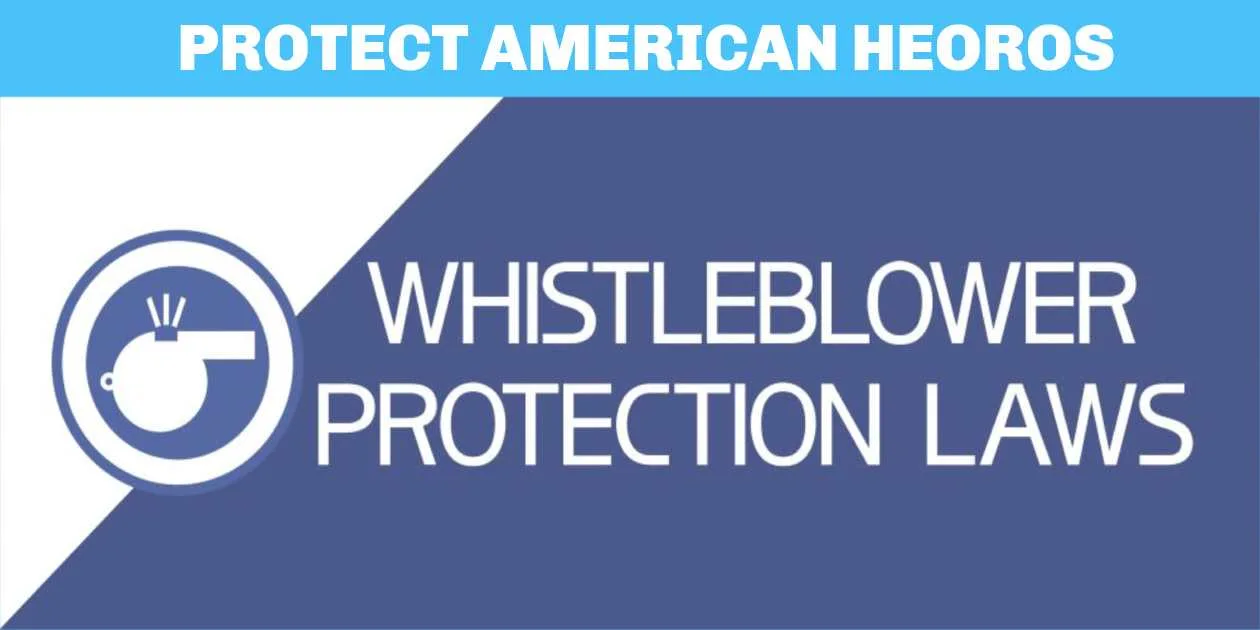
The Foundation of American Whistleblowing: Revolutionary War Origins
Democratic Principles: Truth-telling formed a fundamental pillar of American democracy from its earliest inception. Whistleblower protection principles emerged during the Revolutionary War itself, establishing ethical frameworks that continue shaping how Americans view individuals who speak truth to power against institutional authority.
Samuel Shaw and Richard Marven: The First Protected Whistleblowers (1777)
Pivotal Moment: The winter of 1777 marked a watershed moment in American whistleblowing history. Ten sailors and marines gathered secretly aboard the warship Warren, anchored outside Providence, Rhode Island. Their mission involved no military strategy against British forces—instead, they documented serious misconduct by Commodore Esek Hopkins, commander-in-chief of the Continental Navy.
Documented Violations: These naval officers compiled detailed allegations against Hopkins that demonstrated systematic abuse of authority:
- Torturing British prisoners of war in direct violation of accepted military conduct
- Deliberately disobeying direct orders from superior authorities
- Speaking disrespectfully about the Continental Congress and its legitimate authority
- Refusing to follow Congressional directives regarding naval operations
Congressional Response: Marine Captain John Grannis delivered their petition directly to the Continental Congress, which responded decisively by suspending Hopkins from his command position on March 26, 1777. This action established that ethical conduct remained paramount even during active wartime conditions.
Severe Retaliation: The consequences for these early truth-tellers proved devastating. Hopkins, enraged by their disclosure, filed criminal libel charges in Rhode Island against two whistleblowers who remained within state jurisdiction—Midshipman Samuel Shaw and Third Lieutenant Richard Marven. Both men faced immediate arrest and imprisonment while awaiting legal proceedings.
Appeal for Justice: From their prison cell, Shaw and Marven petitioned Congress for assistance, declaring they had been “arrested for doing what they then believed and still believe was nothing but their duty”. This desperate plea would trigger a landmark decision establishing precedents that extend directly to modern whistleblower protections.
The First Whistleblower Protection Law: Revolutionary Legal Framework (1778)
Unprecedented Action: July 30, 1778 witnessed the Continental Congress taking extraordinary action by unanimously enacting the world’s first whistleblower protection law. This groundbreaking legislation declared:
“That it is the duty of all persons in the service of the United States, as well as all other inhabitants thereof, to give the earliest information to Congress or any other proper authority of any misconduct, frauds or misdemeanors committed by any officers or persons in the service of these states, which may come to their knowledge”.
Financial Commitment: Congress exceeded mere legislative action by authorizing payment for Shaw and Marven’s legal defense. Despite severe financial constraints facing the new republic during wartime, the Continental Congress paid $1,418 for their defense—equivalent to approximately $50,000 today.
Transparency Precedent: Congress ordered complete release of all records related to Hopkins’ removal, establishing crucial precedent for government transparency. No “state secret” privilege was invoked despite the sensitive military nature of the information during active warfare.
Foundational Commitment: This historic decision demonstrated the founders’ conviction that whistleblower protection remained essential for maintaining accountability within the new republic’s institutions.
Benjamin Franklin: America’s First Major Government Whistleblower
Pre-Revolutionary Disclosure: Before Shaw and Marven’s naval case, Benjamin Franklin—renowned for scientific discoveries and diplomatic achievements—engaged in what constituted America’s first significant act of government whistleblowing.
Confidential Intelligence: Franklin obtained confidential correspondence written by Thomas Hutchinson, Massachusetts governor, in 1773. These letters revealed Hutchinson had been secretly advising British officials to restrict colonial rights, writing that “There must be an abridgement of what are called English liberties”.
Strategic Disclosure: Franklin secretly transmitted these incriminating documents to Thomas Cushing, speaker of the Massachusetts Assembly, on December 2, 1772, explaining they revealed “the Foundation of most if not all our present Grievances”. Samuel and John Adams ensured publication in Boston newspapers, igniting widespread colonial outrage.
Devastating Revelations: The letters documented Hutchinson’s advocacy for British taxation of American colonies and his requests for additional British troops to suppress colonial protesters. The revelations proved explosive—Bostonians erupted in fury, Hutchinson fled to permanent exile in England, and Franklin faced severe public reprimand from British Parliament.
Revolutionary Catalyst: This disclosure generated profound consequences that accelerated colonial resistance. The Boston Tea Party occurred shortly afterward with its defiant cry of “No taxation without representation,” propelling the colonies toward inevitable revolution.
Institutional Framework: These foundational cases demonstrate how whistleblowing became woven into American democratic fabric from its inception. The founders recognized that citizens reporting wrongdoing by those wielding power represented an essential principle for maintaining government accountability—a concept that remains central to democratic governance today.
 20th Century Whistleblowing: Corporate Misconduct and Environmental Dangers Exposed
20th Century Whistleblowing: Corporate Misconduct and Environmental Dangers Exposed
Whistleblowing Evolution: The 20th century witnessed a fundamental expansion of truth-telling activities beyond government corruption into corporate misconduct, political conspiracies, and environmental threats. These individuals confronted powerful interests at substantial personal risk to protect public welfare and regulatory compliance.
Upton Sinclair and The Jungle (1906)
Industrial Conditions: Novelist Upton Sinclair uncovered horrifying conditions within Chicago’s meatpacking industry that would fundamentally transform American consumer protection. His investigative novel The Jungle revealed specific deceptive practices:
• Walls splattered with blood and flesh from unsanitary processing • Rotten beef treated with dangerous chemicals to mask spoilage • Dead rats and sawdust deliberately swept into sausage meat • Tuberculosis-infected workers coughing blood directly onto food products
Unintended Impact: Sinclair intended to highlight worker exploitation, famously lamenting, “I aimed at the public’s heart, and by accident I hit it in the stomach”. His graphic descriptions sparked immediate public outrage about food safety violations rather than labor conditions.
Regulatory Void: Prior to Sinclair’s exposé, food manufacturing remained completely unregulated. “There was a license to do whatever you wanted to maximize profits,” noted author Deborah Blum. Chemical-laced “embalmed beef” fed to soldiers during the Spanish-American War proved deadlier than combat itself. Formaldehyde-tainted food and milk reportedly killed approximately 400,000 American infants annually.
Legislative Breakthrough: Food safety legislation had stalled for years due to industry influence, but The Jungle broke the political logjam. President Theodore Roosevelt initially remained skeptical until independent investigators confirmed conditions were “just as bad—or even worse—than depicted in The Jungle“. Roosevelt signed both the Pure Food and Drug Act and the Meat Inspection Act into law on June 30, 1906.
Smedley Butler and the Business Plot (1933)
Military Whistleblowing: Major General Smedley Butler, a decorated Marine Corps officer and twice recipient of the Medal of Honor, exposed what became known as the “Business Plot” in 1933. This alleged conspiracy involved wealthy businessmen planning to overthrow President Franklin D. Roosevelt’s administration and install a fascist government.
Congressional Testimony: Butler testified under oath before the McCormack–Dickstein Committee that Wall Street broker Gerald C. MacGuire had attempted to recruit him to lead a coup against Roosevelt. The plotters promised Butler an army of 500,000 men and substantial financial backing. Butler would have held near-absolute power as “Secretary of General Affairs” while Roosevelt remained merely a figurehead.
Validation: Initially dismissed by major news outlets as a “gigantic hoax,” the committee’s investigation ultimately validated Butler’s claims. Their final report stated: “There is no question that these attempts were discussed, were planned, and might have been placed in execution when and if the financial backers deemed it expedient”.
Personal Reflection: Butler later reflected with stark honesty: “I spent most of my time being a high-class muscle man for big business, for Wall Street, and for the bankers. In short, I was a racketeer for capitalism”.
Rachel Carson and Silent Spring (1962)
Environmental Whistleblowing: Marine biologist Rachel Carson fundamentally altered public understanding of environmental protection with her groundbreaking book Silent Spring in 1962. The title referred to a spring without birdsong—silenced by the deadly effects of pesticides.
Scientific Discovery: Carson’s investigation began after receiving a letter about DDT killing birds, yet her research revealed much broader impacts. She discovered pesticides like DDT affected animals’ reproductive functions, weakening eggshells and threatening species survival. Carson was the first to identify that pesticides could directly impact hormonal systems and modify reproductive functions—a revolutionary scientific finding.
International Impact: Several dozen articles appeared within months of the French translation’s publication in April 1963, indicating the book’s international reach. Despite officials attempting to downplay her findings, Carson’s work ultimately led to the banning of DDT ten years after publication.
Industry Opposition: Carson faced significant opposition from the chemical industry, which she accused of spreading misinformation about pesticides while government authorities prioritized industry demands over public health protection. Her environmental whistleblowing proved instrumental in creating the Environmental Protection Agency (EPA) in 1970 and establishing the foundation for modern environmental regulation.
Expanded Scope: These three distinct cases demonstrate how whistleblowing activities expanded beyond exposing government corruption to highlighting threats to public health, democratic institutions, and environmental protection systems.
Vietnam Era Whistleblowing: Government Secrecy Confronts Democratic Accountability
Watershed Period: The Vietnam War period fundamentally transformed whistleblowing from isolated incidents into systematic challenges against government secrecy. Government employees increasingly disclosed classified information they determined the public required for democratic oversight, fundamentally altering American perceptions of institutional transparency and accountability.
Institutional Reckoning: These cases triggered a broader reckoning with government credibility, military authority, and law enforcement integrity that continues to influence whistleblower protections today.
Daniel Ellsberg: Pentagon Papers and the Limits of Government Secrecy
Military Analyst Turned Truth-Teller: Daniel Ellsberg, a former military analyst working at the RAND Corporation, became the catalyst for one of the most consequential whistleblowing cases in American history. Ellsberg released the Pentagon Papers—a 7,000-page top-secret Pentagon study documenting American involvement in Vietnam from 1945 to 1968.
Systematic Government Deception: The Pentagon Papers exposed a disturbing pattern of institutional dishonesty that spanned multiple presidential administrations:
- Multiple administrations deliberately expanded American involvement while concealing the truth from Congress
- Government officials privately doubted the war could be won while publicly claiming imminent victory
- Presidents Kennedy, Johnson, and Nixon systematically misled the American public about the scope and nature of U.S. military operations
Escalating Disclosure Strategy: After attempting to work through proper channels by sharing the documents with senators who refused to take action, Ellsberg provided the papers to The New York Times. When the Nixon administration obtained a federal injunction to halt publication, Ellsberg distributed the documents to The Washington Post and eventually 15 additional newspapers.
Legal Victory and Political Consequences: The Supreme Court ruled 6-3 in favor of the newspapers on June 30, 1971, establishing a landmark First Amendment precedent against prior restraint of the press. The Nixon administration’s illegal response—including the break-in at Ellsberg’s psychiatrist’s office—contributed directly to the Watergate scandal that ultimately ended Nixon’s presidency.
Ron Ridenhour: My Lai Massacre and Military Accountability
Systematic Investigation: Ron Ridenhour, a 23-year-old recently returned Vietnam veteran, conducted extraordinary investigative work to expose one of the most horrific atrocities of the Vietnam War. While serving as a helicopter gunner, Ridenhour heard disturbing accounts from fellow soldiers about events in the village of My Lai.
Methodical Evidence Gathering: Through careful investigation while still on active duty, Ridenhour interviewed witnesses and documented evidence about the massacre of approximately 500 unarmed South Vietnamese civilians by U.S. soldiers on March 16, 1968. Following his return to the United States, Ridenhour wrote detailed letters to President Nixon, five senior officials, and 24 members of Congress exposing the atrocity.
Moral Foundation: Ridenhour articulated his motivation with stark clarity: “If you and I do truly believe in the principles of justice and the equality of every man, however humble, before the law, that form the very backbone that this country is founded on, then we must press forward a widespread and public investigation of this matter”.
Limited Justice: His disclosure prompted a Department of Defense investigation that resulted in charges against 26 soldiers, though Lieutenant William Calley became the only officer convicted. Ridenhour’s persistence prevented a complete cover-up and fundamentally changed public discourse about military conduct during wartime.
Frank Serpico: NYPD Corruption and Law Enforcement Reform
Systematic Police Corruption: Frank Serpico, a plainclothes police officer working across Brooklyn, the Bronx, and Manhattan, exposed widespread corruption within the New York Police Department during the late 1960s and early 1970s. After reporting credible evidence of police corruption internally in 1967 produced no results, Serpico eventually contributed to front-page coverage in The New York Times.
Institutional Infection: Daniel Ellsberg labeled Serpico “the godfather of whistleblowers”, recognizing how he revealed systematic bribery and protection rackets that had infected the entire department. Serpico’s testimony before the Knapp Commission, established to investigate his allegations, proved prophetic: “If this is not challenged and stopped now it will infect the whole system”.
Dangerous Retaliation: On February 3, 1971, Serpico was shot in the face during an arrest attempt in Williamsburg, Brooklyn, under circumstances that raised serious questions about whether fellow officers had orchestrated the attack. Despite this life-threatening retaliation, Serpico became the first officer in NYPD history to openly testify about widespread, systematic corruption.
Limited Reform: His courage ultimately prompted significant reforms in police accountability, yet Serpico maintained that decades later, “an honest cop still cannot find a place to go and complain without fear of recrimination”.
Institutional Precedents: These Vietnam-era cases established critical precedents for challenging government secrecy, military authority, and law enforcement misconduct while demonstrating the severe personal consequences whistleblowers face when confronting powerful institutional interests.
Corporate Whistleblowers: Transforming Industry Standards Through Courage
Corporate whistleblowing emerged as a transformative force during the late 20th century, fundamentally altering safety standards, health regulations, and corporate accountability across multiple industries. These courageous individuals risked their careers and personal safety to expose dangerous practices that threatened public welfare.
Industry Transformation: The consequences of their disclosures extended far beyond individual companies, establishing new regulatory frameworks and enforcement mechanisms that continue to protect consumers today.
Karen Silkwood: Nuclear Safety’s First Truth-Teller
Nuclear Industry Corruption: Karen Silkwood worked as a laboratory technician at Kerr-McGee’s Cimarron River nuclear facility beginning in 1972. After joining the Oil, Chemical, and Atomic Workers Union, she undertook systematic investigation of health and safety violations that would expose widespread negligence.
Critical Safety Violations: Silkwood’s investigation documented severe safety failures that posed immediate threats to workers and surrounding communities:
- Plutonium spills and contamination incidents that violated federal safety protocols
- Falsification of quality control records designed to hide regulatory violations
- Inadequate safety training that left workers vulnerable to radiation exposure
- Missing plutonium quantities that raised national security concerns
Deadly Exposure: On November 5, 1974, Silkwood’s routine self-check revealed almost 400 times the legal limit for plutonium contamination. Despite initial Los Alamos National Laboratory testing that reported acceptable radiation levels, her condition proved far more serious than initially disclosed.
Mysterious Death: Silkwood arranged to meet with a New York Times journalist on November 13, 1974, carrying documentary evidence of plant violations. She died that same night in a car crash under circumstances that raised serious questions about potential retaliation. The evidence she planned to present disappeared.
Truth Emerges: Her autopsy contradicted the Los Alamos report, revealing dangerously high radiation levels throughout her body. Following years of litigation, her family secured an out-of-court settlement of USD 1.38 million from Kerr-McGee in 1986. Silkwood became nuclear energy’s first whistleblower, bringing unprecedented national attention to industry safety violations.
Jeffrey Wigand: Exposing Big Tobacco’s Deadly Deception
Industry Executive Turned Whistleblower: Dr. Jeffrey Wigand served as Vice President of Research and Development at Brown & Williamson Tobacco Corporation until his termination in 1993. His 1996 decision to publicly address smoking and health issues made him the highest-ranking tobacco industry executive to expose industry practices.
Engineered Addiction: Wigand revealed that Brown & Williamson deliberately manipulated cigarette composition to enhance nicotine’s addictive properties. His disclosures exposed sophisticated schemes designed to create and maintain addiction:
Chemical Manipulation: Companies added ammonia compounds specifically to increase nicotine impact while maintaining chemicals known to be carcinogenic, including coumarin. These engineering practices demonstrated deliberate intent to create addiction rather than provide consumer choice.
Massive Retaliation: After providing testimony in Mississippi’s lawsuit against tobacco companies and appearing on CBS 60 Minutes on February 4, 1996, Wigand faced aggressive industry retaliation. Brown & Williamson hired investigators to compile a 500-page dossier designed to discredit his testimony.
Historic Settlement: Despite these attacks, Wigand’s revelations proved instrumental in securing the historic settlement exceeding USD 206 billion between state attorneys general and the tobacco industry. The most significant regulatory outcome emerged in 2009 with passage of the Family Smoking Prevention and Tobacco Control Act, granting the FDA authority to regulate tobacco products. This legislation enabled warning labels on packaging and banned flavored cigarettes.
Mark Whitacre: Uncovering Price-Fixing Conspiracy
Corporate Price-Fixing: Mark Whitacre, a divisional president at Archer Daniels Midland (ADM), exposed one of the largest price-fixing cases in American history. At age 35, Whitacre informed the FBI in 1992 that ADM participated in international price-fixing schemes involving lysine, an amino acid used in food processing.
Undercover Investigation: For three years, Whitacre wore FBI recording devices, documenting illegal collusion that would ultimately expose widespread corporate fraud. His undercover work led to federal raids on ADM and indictments against multiple executives, including the company’s former vice chairman.
Complex Consequences: The investigation revealed unexpected complications when officials discovered Whitacre had embezzled approximately USD 9 million from ADM through corporate kickbacks and money laundering while simultaneously serving as an FBI informant[173]. Whitacre received a 9-year federal prison sentence, significantly longer than the 30-month maximum terms given to executives convicted in the price-fixing scheme.
Corporate Accountability Results: Despite his personal legal troubles, Whitacre’s whistleblowing produced profound effects on corporate accountability. ADM paid a USD 100 million fine, while additional class action lawsuits extracted hundreds of millions in damages from the company.
Industry Standards Revolution: These three whistleblowers fundamentally transformed their respective industries through forced transparency, enhanced regulatory oversight, and increased corporate accountability for public health and safety violations. Their courage established precedents that continue to protect consumers and workers across multiple sectors.
Post-9/11 Whistleblowers and National Security Disclosures
Government Surveillance Expansion: The September 11 attacks triggered an unprecedented expansion of government surveillance capabilities that prompted intelligence professionals to risk their careers and freedom when exposing what they considered unconstitutional overreach.
Intelligence Community Response: These courageous individuals faced severe regulatory enforcement actions and criminal prosecution for their disclosures, demonstrating the dangerous consequences that national security whistleblowers encounter when challenging powerful government agencies.
Thomas Drake and NSA Financial Waste
Thomas Drake: A ten-year Air Force veteran and NSA analyst who joined the agency full-time in 2001, reporting directly to the NSA’s third highest ranking official. Drake’s whistleblowing investigation began when he discovered the NSA’s Trailblazer Project wasted approximately $3.8 billion while failing to protect Americans from terrorist threats.
Proper Procedures: Drake followed established whistleblowing procedures by first reporting concerns through his chain of command, then escalating to Congress and the Department of Defense Inspector General. His persistent efforts ultimately succeeded in ending Trailblazer’s funding.
Government Retaliation: The agency responded with devastating consequences designed to silence Drake’s disclosures:
- Management stripped Drake of meaningful responsibilities and transferred him to insignificant positions
- The FBI conducted an armed raid on his personal residence
- Prosecutors indicted him under the Espionage Act in 2010, threatening decades in federal prison
Vindication: Drake’s persistence ultimately prevailed. He received the Ridenhour Prize for Truth-Telling in 2011, and his case attracted extensive media coverage. The prosecution collapsed four days before trial was scheduled to begin, with Drake pleading to a minor misdemeanor.
William Binney and Mass Surveillance Programs
Technical Director: William Binney served as a 36-year NSA veteran and technical director who co-developed ThinThread, a surveillance program specifically designed to protect Americans’ privacy while gathering foreign intelligence. Binney resigned in October 2001 after witnessing the agency discard ThinThread for the ineffective Trailblazer system.
Constitutional Objections: Binney specifically objected to the government’s post-9/11 domestic surveillance program, code-named “Stellar Wind”. He maintained that intercepts collected but not analyzed through his more focused system would likely have uncovered the 9/11 plot before the attacks occurred.
Inspector General Validation: Binney joined others in filing a Department of Defense Inspector General complaint that ultimately validated their concerns. Despite this official vindication, he faced harsh retaliation including an FBI raid on his home.
Edward Snowden and Global Data Collection
Massive Disclosure: E raised concerns to multiple officials before his public disclosures
Failed Internal Reporting: Snowden reportedly raised concerns to multiple officials before his public disclosures and received no meaningful response. His revelations demonstrated that technology companies including Facebook, Google, and Microsoft were compelled to provide customer data to the NSA under secret court orders.
Substantial Legal Impact: The consequences of Snowden’s disclosures proved substantial and lasting. Courts ruled key aspects of the surveillance programs illegal, technology companies enhanced encryption standards, and Congress passed the USA Freedom Act restricting bulk collection of phone records.
Ongoing Challenges: Government rRetaliation against national security whistleblowers created what one congressional report characterized as “a double standard” with “dangerous consequences” for national security. These cases demonstrate how intelligence professionals who expose government wrongdoing face far more severe consequences than those who commit the violations they seek to expose.
Corporate Fraud Whistleblowers: Financial and Healthcare Scandals That Triggered Securities Litigation
Financial sector whistleblowing: Exposed systematic corruption within America’s largest corporations, creating devastating consequences through securities class action lawsuits and regulatory enforcement actions. These courageous individuals faced professional isolation, career destruction, and coordinated personal attacks for their unwavering ethical positions.
Sherron Watkins: Accounting Fraud at Enron Corporation
Enron Vice President Sherron Watkins: Discovered misleading accounting practices during summer 2001 at what financial analysts then considered America’s most innovative energy company. Watkins documented detailed concerns in a comprehensive memo to Chairman Kenneth Lay, warning that the company’s accounting methods violated established regulatory compliance standards and could trigger complete organizational collapse.
Prophetic Warnings: Her predictions proved devastatingly accurate. Following The Wall Street Journal’s publication of articles speculating about financial statement fraud, Enron’s board finally initiated investigations. Watkins immediately faced severe retaliation—management relocated her from the executive floor and systematically stripped her of meaningful responsibilities.
Essential Guidance for Future Whistleblowers:
Leadership Ethics: Corporate leaders must maintain pristine ethical standards to prevent accounting fraud schemes
Communication Channels: Organizations require established pathways for reporting negative information without fear of retaliation
Support Networks: Whistleblowers should seek assistance rather than confronting powerful interests alone
Three Ms Test: Consider whether you would discuss concerns with a Mentor, accept seeing them in Media coverage, or explain them to your Mother
Cynthia Cooper: WorldCom’s $3.8 Billion Fraud Discovery
WorldCom Internal Audit: Vice President Cynthia Cooper led her investigative team through secretive nighttime operations during 2002 to examine suspicious accounting practices. Their methodical investigation uncovered [USD 3.80 billion in fraud](https://en.wikipedia.org/wiki/Cynthia_Cooper_(accountant) through systematic accounting fraud techniques, representing the largest corporate fraud case in American history at that time.
Financial Statement Manipulation: Cooper’s discovery forced WorldCom executives to admit the company had overstated assets by more than USD 11.00 billion through deliberate financial reporting violations. TIME magazine recognized Cooper’s extraordinary courage by naming her one of three “People of the Year” in 2002.
Long-Term Commitment: Cooper remained with the reorganized company (renamed MCI) for two additional years following the fraud discovery, helping the organization emerge from bankruptcy proceedings. She subsequently established her own consulting firm specializing in corporate governance and published “Extraordinary Circumstances: The Journey of a Corporate Whistleblower” in 2008, donating all profits to ethics education initiatives.
Harry Markopolos: Exposing Bernie Madoff’s Ponzi Scheme
Forensic Accounting Analysis: Harry Markopolos dedicated nearly a decade attempting to expose Bernie Madoff’s massive financial fraud scheme. Upon examining Madoff’s purported investment strategy in 1999, Markopolos determined within five minutes that the reported numbers represented impossible financial performance. Additional investigation revealed Madoff claimed to manage approximately USD 6.00 billion—three times larger than any legitimate hedge fund operation.
Systematic SEC Warnings: Between 1999 and 2008, Markopolos repeatedly alerted the Securities and Exchange Commission (SEC) with detailed evidence documenting the fraud scheme. His comprehensive 2005 memo, titled “The World’s Largest Hedge Fund is a Fraud,” outlined 30 distinct red flags indicating Madoff’s returns could not represent legitimate investment performance. The SEC systematically ignored these warnings until Madoff’s sons reported him to authorities in December 2008.
Massive Financial Losses: Markopolos later estimated that USD 35.00 billion to USD 55.00 billion of Madoff’s reported assets never existed—they represented purely fictional profits created through accounting manipulation. During his congressional testimony, Markopolos criticized SEC incompetence, specifically noting “regional turf rivalries” and inadequate staffing with lawyers who lacked understanding of complex financial products.
Industry Transformation: These three whistleblower cases fundamentally altered corporate accountability standards within financial and healthcare sectors, establishing stronger regulatory enforcement mechanisms and enhanced whistleblower protection frameworks that continue protecting market integrity today.
Legal Framework Evolution: Modern Whistleblower Protection and Enforcement Mechanisms
Whistleblower protection laws: Have evolved from basic safeguards to sophisticated legal frameworks that provide comprehensive defense against retaliation while incentivizing disclosure of wrongdoing. These regulatory compliance mechanisms now represent some of the most powerful enforcement tools available to combat corporate fraud and government misconduct.
The False Claims Act: America’s Most Effective Anti-Fraud Weapon
Modern False Claims Act enforcement: Has transformed Lincoln’s 1863 legislation into America’s primary weapon against fraud involving government funds. The Act’s powerful qui tam provision enables private citizens to file lawsuits directly on behalf of the United States government, creating a unique partnership between whistleblowers and federal prosecutors.
Financial Incentives: Whistleblowers receive mandatory compensation ranging from 15-30% of recovered proceeds under the qui tam provisions. These substantial rewards have proven remarkably effective at encouraging high-quality disclosures that result in successful prosecutions.
Enforcement Statistics: The 1986 amendments fundamentally strengthened the FCA’s effectiveness, producing unprecedented results that demonstrate the power of incentivized disclosure:
Recovery Totals: Whistleblower cases have generated USD 46.50 billion in recoveries for the U.S. Treasury through fiscal year 2020
Whistleblower Compensation: Individual whistleblowers have received USD 7.80 billion in rewards for their disclosures
Case Volume: Federal courts processed 672 qui tam lawsuits in 2020 alone—averaging 13 new whistleblower cases weekly
Success Rate: These cases consistently produce higher recovery rates than traditional government-initiated enforcement actions
Sarbanes-Oxley Act: Corporate Accountability Through Whistleblower Protection
Corporate whistleblower protection: Received unprecedented enhancement following the Enron and WorldCom scandals that devastated investor confidence. The Sarbanes-Oxley Act of 2002 established comprehensive standards requiring public companies to create internal controls and reporting mechanisms specifically designed to encourage employee disclosure of fraudulent activities.
Mandatory Corporate Requirements: SOX requires public companies to adopt formal business ethics codes and establish internal procedures that enable employees to report suspected accounting fraud without fear of retaliation.
Protected Disclosure Categories: The Act provides legal safeguards for whistleblowers who reasonably believe they have evidence of violations involving:
Securities fraud and financial statement manipulation Mail fraud and wire fraud schemes Bank fraud and regulatory compliance failures
SEC rule violations and disclosure omissions
Federal Employee Protections: The Whistleblower Protection Act Framework
Government whistleblower protection: Operates under the Whistleblower Protection Act, which ensures federal employees can safely disclose violations of laws, gross mismanagement, abuse of authority, and substantial dangers to public health and safety. The Whistleblower Protection Enhancement Act of 2012 significantly strengthened these protections by expanding the scope of protected disclosures and closing loopholes that had limited employee protections.
Enhanced Coverage: Modern federal protections now extend to a broader range of disclosure activities, including communications to supervisors, disclosures during normal duties, and reports to inspectors general across all federal agencies.
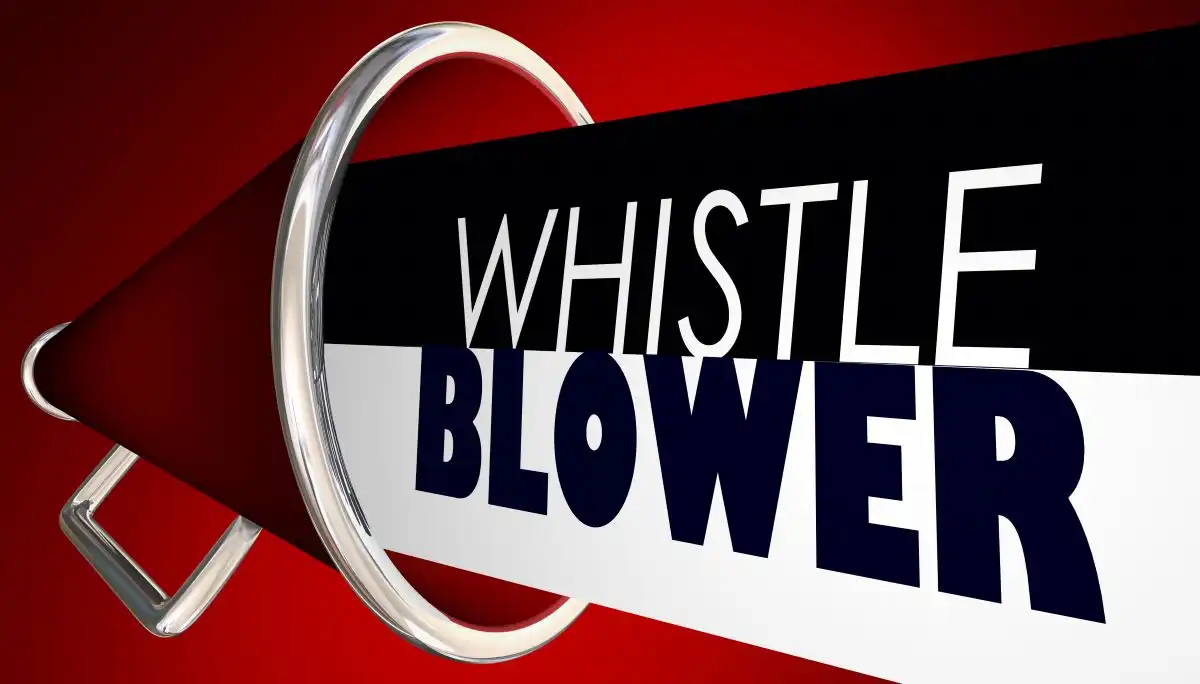 Retaliation Patterns: The Hidden Cost of Truth-Telling
Retaliation Patterns: The Hidden Cost of Truth-Telling
Employment retaliation: Represents the primary risk facing whistleblowers despite comprehensive legal protections. Retaliation occurs when employers take adverse action against employees specifically because of their protected disclosure activities.
Direct Retaliation Methods: Termination and constructive discharge designed to force resignations Demotion and denial of benefits or promotional opportunities Formal discipline and performance-based harassment Transfer to undesirable positions or assignment of meaningless work
Subtle Retaliation Tactics: Professional isolation through exclusion from meetings and decision-making processes Workplace harassment and character assassination campaigns Financial pressure through denial of overtime opportunities and previously approved benefits Performance manipulation involving sudden negative reviews following consistently positive feedback
Legal Consequences: Employers who engage in whistleblower retaliation face substantial financial penalties, including compensatory damages, punitive damages, attorney fees, and reinstatement orders. These legal remedies have proven essential for maintaining the effectiveness of whistleblower protection programs across all sectors.
Enforcement Impact: The evolution of these legal frameworks has created a comprehensive system where regulatory compliance failures and corporate fraud face unprecedented scrutiny from both government agencies and private whistleblowers armed with powerful financial incentives and robust legal protections.
Policy Transformation Through Whistleblower Disclosures
Legislative Catalysts: Whistleblowers function as essential catalysts for regulatory reform by exposing fundamental gaps in existing legal frameworks that enable fraud and misconduct to flourish unchecked. Their disclosures create the political pressure necessary to overcome institutional resistance and industry lobbying that typically prevents meaningful policy reform.
Statistical Evidence: Research demonstrates that whistleblowers expose significantly more fraud than internal audits and law enforcement agencies combined. These revelations translate directly into legislative action—whistleblower-initiated cases recovered over USD 1.60 billion through False Claims Act settlements in 2020 alone. The Securities and Exchange Commission received more whistleblower tips in 2018 than any previous year, indicating the growing effectiveness of these disclosure mechanisms.
Direct Legislative Impact
Sherron Watkins’ Enron disclosures: Directly influenced the passage of the Sarbanes-Oxley Act, which established unprecedented corporate accountability standards and regulatory compliance requirements. Similarly, Bradley Birkenfeld’s revelations about Swiss banking practices triggered fundamental changes in tax law enforcement and resulted in the recovery of USD 5.00 billion from illegal offshore accounts.
Policy Formation Process: These cases demonstrate how whistleblower disclosures create the public outrage necessary to overcome entrenched interests that typically block regulatory reform. When internal controls fail and traditional oversight mechanisms prove inadequate, whistleblowers provide the evidence that policymakers need to justify comprehensive legislative action.
Media Partnerships and Public Pressure
Strategic Communications: The relationship between journalists and whistleblowers represents a critical component in transforming individual disclosures into sustained policy pressure. Media outlets provide essential platforms that amplify wrongdoing beyond regulatory agencies, creating the public accountability necessary for legislative action.
Channel Selection: Whistleblowers typically contact journalists when internal reporting channels fail to produce meaningful action. Strategic partnerships between whistleblowers and reporters with subject matter expertise significantly increase the impact of disclosures and the likelihood of policy reform. Frances Haugen’s careful selection of a technology-focused journalist to report her Facebook disclosures exemplifies this strategic approach.
Amplification Effects: Many successful whistleblowers carefully evaluate reporters based on subject expertise, ethical standards, and audience reach. This strategic approach ensures maximum public impact and creates the sustained pressure necessary for meaningful regulatory change.
Financial Incentive Structures
Deterrence Mechanisms: Financial reward programs have proven remarkably effective in encouraging high-quality disclosures that lead to successful prosecutions and regulatory enforcement. Since 2014, the CFTC has awarded approximately USD 390.00 million to whistleblowers, while these actions generated monetary relief exceeding USD 3.20 billion.
Policy Effectiveness: The Department of Justice offers whistleblower awards up to 30% of forfeited assets, creating powerful economic incentives for individuals with knowledge of fraud to come forward. Data confirms that reward laws generate high-quality tips that result in successful prosecutions.
Systemic Impact: These financial incentives create deterrence effects against corporate misconduct by dramatically increasing the probability of detection. When potential violators understand that employees have strong economic incentives to report wrongdoing, the risk-reward calculation for fraudulent behavior fundamentally shifts in favor of compliance and ethical conduct.
Whistleblower Legacy: The Continuing Battle for Institutional Accountability
Historical Continuity: Whistleblowers have demonstrated extraordinary moral courage across more than two centuries of American history, consistently speaking truth to power despite devastating personal consequences. These individuals share an unwavering commitment to transparency and accountability that transcends historical periods and institutional boundaries.
Legal Evolution: The legal framework protecting whistleblowers has undergone substantial transformation since the Continental Congress enacted America’s first whistleblower protection law in 1778. Modern legislation including the False Claims Act, Sarbanes-Oxley Act, and Whistleblower Protection Act now provides comprehensive safeguards for those who expose wrongdoing.
Persistent Risks: Despite enhanced legal protections, whistleblowers continue facing severe retaliation that can destroy careers and lives:
Professional Destruction: Career termination, professional ostracism, and systematic exclusion from future employment opportunities
Financial Devastation: Loss of income, costly legal battles against well-funded opponents, and denial of previously approved benefits
Personal Attacks: Coordinated campaigns designed to discredit testimony and destroy personal reputations
Psychological Trauma: Emotional distress from prolonged legal proceedings and social isolation
Essential Function: These truth-tellers serve as critical guardians of public interest, directly prompting legislative reforms, enhanced regulatory oversight, and establishment of new industry standards across healthcare, finance, government institutions, and environmental protection.
Proven Effectiveness: Financial incentive programs have demonstrated remarkable success, with whistleblower-initiated cases recovering billions in fraudulently obtained funds while creating powerful deterrence effects against institutional misconduct.
Media Partnership: Strategic collaboration between whistleblowers and journalists remains essential when internal reporting channels fail. This relationship represents one of the most powerful mechanisms for exposing corruption and applying necessary pressure for institutional reform.
Democratic Foundation: The untold stories examined throughout this analysis demonstrate that democratic institutions fundamentally depend on individuals willing to risk everything for truth and accountability. These brave truth-tellers have repeatedly altered the course of American history, establishing that ethical courage—though personally devastating—remains essential for maintaining institutional integrity and protecting public welfare.
Ongoing Imperative: The battle for transparency and accountability requires continued vigilance from citizens, enhanced protections for truth-tellers, and recognition that whistleblower protection represents a cornerstone of democratic governance that must be defended against institutional retaliation and public indifference.
COMPREHENSIVE AND AUTHORITATIVE FREQUENTLY ASKED QUESTIONS
Q: When did first protection for whistleblowers begin in America?
Whistleblower protection emerged during the Revolutionary War itself, establishing the foundation for modern truth-telling safeguards. In 1777, ten naval officers courageously reported serious misconduct by Commodore Esek Hopkins, commander-in-chief of the Continental Navy. These officers documented systematic violations including torture of British prisoners, deliberate disobedience of Congressional orders, and disrespectful conduct toward legitimate authority.
The Continental Congress responded decisively by unanimously enacting America’s first whistleblower protection law on July 30, 1778. This groundbreaking legislation declared it “the duty of all persons in the service of the United States” to report misconduct, frauds, or misdemeanors to Congress or proper authorities. Despite severe wartime financial constraints, Congress paid $1,418 for the legal defense of the two whistleblowers who faced criminal libel charges—equivalent to approximately $50,000 today.
Q: What makes the False Claims Act so effective against fraud?
The False Claims Act represents America’s most powerful anti-fraud weapon, transforming Lincoln’s 1863 legislation into a sophisticated enforcement mechanism. The Act’s qui tam provision enables private citizens to file lawsuits directly on behalf of the United States government, creating a unique partnership between whistleblowers and federal prosecutors.
Financial incentives prove remarkably effective at encouraging high-quality disclosures. Whistleblowers receive mandatory compensation ranging from 15-30% of recovered proceeds, creating substantial rewards for successful cases. The enforcement statistics demonstrate unprecedented effectiveness: whistleblower cases have generated $46.50 billion in recoveries for the U.S. Treasury through fiscal year 2020, while individual whistleblowers have received $7.80 billion in rewards for disclosures from whistleblowers.
Federal courts processed 672 qui tam lawsuits in 2020 alone—averaging 13 new whistleblower cases weekly. These cases consistently produce higher recovery rates than traditional government-initiated enforcement actions, proving the power of incentivized disclosure.
Q: How did corporate scandals change protections for whistleblowers?
The devastating Enron and WorldCom scandals fundamentally transformed corporate accountability through enhanced whistleblower protection frameworks. Sherron Watkins discovered misleading accounting practices at Enron during summer 2001, warning Chairman Kenneth Lay that the company’s methods violated regulatory compliance standards and could trigger complete organizational collapse. Her predictions proved devastatingly accurate when Enron’s board finally initiated investigations.
Cynthia Cooper’s investigation at WorldCom uncovered $3.8 billion in fraud through systematic accounting fraud techniques, representing the largest corporate fraud case in American history at that time. Her methodical nighttime operations revealed that WorldCom had overstated assets by more than $11.00 billion through deliberate financial reporting violations.
These revelations directly influenced passage of the Sarbanes-Oxley Act of 2002, which established unprecedented corporate accountability standards. SOX requires public companies to adopt formal business ethics codes and establish internal procedures enabling employees to report suspected accounting fraud without fear of retaliation. The Act provides legal safeguards for whistleblowers who reasonably believe they have evidence of securities fraud, mail fraud, bank fraud, and SEC rule violations.
Q: What types of retaliation do whistleblowers face despite legal protections?
Employment retaliation represents the primary risk facing whistleblowers despite comprehensive legal protections. Retaliation occurs when employers take adverse action against employees specifically because of their protected disclosure activities as whistleblowers.
Direct retaliation methods include termination and constructive discharge designed to force resignations, demotion and denial of benefits or promotional opportunities, formal discipline and performance-based harassment, and transfer to undesirable positions or assignment of meaningless work.
Subtle retaliation tactics prove equally devastating: professional isolation through exclusion from meetings and decision-making processes, workplace harassment and character assassination campaigns, financial pressure through denial of overtime opportunities and previously approved benefits, and performance manipulation involving sudden negative reviews following consistently positive feedback.
Employers who engage in retaliation against whistleblowers face substantial financial penalties, including compensatory damages, punitive damages, attorney fees, and reinstatement orders. These legal remedies have proven essential for maintaining the effectiveness of whistleblower protection programs across all sectors.
Q: How effective are modern whistleblowers program rewards?
Financial incentive structures have proven remarkably effective in encouraging high-quality disclosures that lead to successful prosecutions and regulatory enforcement. Since 2014, the CFTC has awarded approximately $390.00 million to whistleblowers, while these actions generated monetary relief exceeding $3.20 billion.
The Department of Justice offers whistleblower awards up to 30% of forfeited assets, creating powerful economic incentives for individuals with knowledge of fraud to come forward. The Securities and Exchange Commission received more whistleblower tips in 2018 than any previous year, indicating the growing effectiveness of these disclosure mechanisms.
These financial incentives create deterrence effects against corporate misconduct by dramatically increasing the probability of detection. When potential violators understand that employees have strong economic incentives to report wrongdoing, the risk-reward calculation for fraudulent behavior fundamentally shifts in favor of compliance and ethical conduct.
Q: Who was America’s first major government of the whistleblowers?
Benjamin Franklin engaged in what constituted America’s first significant act of government whistleblowing before the Revolutionary War. Franklin obtained confidential correspondence written by Thomas Hutchinson, Massachusetts governor, in 1773. These letters revealed Hutchinson had been secretly advising British officials to restrict colonial rights, writing that “There must be an abridgement of what are called English liberties.”
Franklin secretly transmitted these incriminating documents to Thomas Cushing, speaker of the Massachusetts Assembly, on December 2, 1772, explaining they revealed “the Foundation of most if not all our present Grievances.” The revelations proved explosive—Bostonians erupted in fury, Hutchinson fled to permanent exile in England, and Franklin faced severe public reprimand from British Parliament.
This disclosure generated profound consequences that accelerated colonial resistance. The Boston Tea Party occurred shortly afterward with its defiant cry of “No taxation without representation,” propelling the colonies toward inevitable revolution. Franklin’s courage established that citizens reporting wrongdoing by those wielding power represented an essential principle for maintaining government accountability.
Q: How did 20th century whistleblowing expand beyond government corruption?
The 20th century witnessed fundamental expansion of truth-telling activities into corporate misconduct, political conspiracies, and environmental threats. Upton Sinclair’s investigation of Chicago’s meatpacking industry revealed horrifying conditions that fundamentally transformed American consumer protection. His novel The Jungle exposed walls splattered with blood and flesh, rotten beef treated with dangerous chemicals, dead rats swept into sausage meat, and tuberculosis-infected workers coughing blood directly onto food products.
Prior to Sinclair’s exposé, food manufacturing remained completely unregulated. Chemical-laced “embalmed beef” fed to soldiers during the Spanish-American War proved deadlier than combat itself. Formaldehyde-tainted food and milk reportedly killed approximately 400,000 American infants annually. President Theodore Roosevelt signed both the Pure Food and Drug Act and the Meat Inspection Act into law on June 30, 1906, following confirmation that conditions were “just as bad—or even worse—than depicted in The Jungle.”
Rachel Carson’s environmental whistleblowing fundamentally altered public understanding of environmental protection with Silent Spring in 1962. Carson discovered pesticides like DDT affected animals’ reproductive functions, weakening eggshells and threatening species survival. She was the first to identify that pesticides could directly impact hormonal systems—a revolutionary scientific finding that ultimately led to DDT’s banning and creation of the Environmental Protection Agency (EPA) in 1970.
Q: What impact did Vietnam War era whistleblowing have on government transparency?
The Vietnam War period fundamentally transformed whistleblowing from isolated incidents into systematic challenges against government secrecy. Daniel Ellsberg’s release of the Pentagon Papers exposed a disturbing pattern of institutional dishonesty spanning multiple presidential administrations. The 7,000-page top-secret Pentagon study documented how multiple administrations deliberately expanded American involvement while concealing the truth from Congress, with government officials privately doubting the war could be won while publicly claiming imminent victory.
After attempting to work through proper channels by sharing documents with senators who refused to take action, Ellsberg provided the papers to The New York Times. When the Nixon administration obtained a federal injunction to halt publication, Ellsberg distributed the documents to The Washington Post and eventually 15 additional newspapers. The Supreme Court ruled 6-3 in favor of the newspapers on June 30, 1971, establishing a landmark First Amendment precedent against prior restraint of the press.
Ron Ridenhour’s exposure of the My Lai Massacre demonstrated extraordinary investigative work by a 23-year-old recently returned Vietnam veteran. Through careful investigation while still on active duty, Ridenhour documented evidence about the massacre of approximately 500 unarmed South Vietnamese civilians by U.S. soldiers on March 16, 1968. His detailed letters to President Nixon, five senior officials, and 24 members of Congress prevented a complete cover-up and fundamentally changed public discourse about military conduct during wartime.
Q: How did post-9/11 national security whistleblowing differ from previous cases?
The September 11 attacks triggered unprecedented expansion of government surveillance capabilities that prompted intelligence professionals to risk their careers and freedom when exposing what they considered unconstitutional overreach. Thomas Drake, a ten-year Air Force veteran and NSA analyst, discovered the NSA’s Trailblazer Project wasted approximately $3.8 billion while failing to protect Americans from terrorist threats.
Drake followed established whistleblowing procedures by first reporting concerns through his chain of command, then escalating to Congress and the Department of Defense Inspector General. Despite this proper approach, the agency responded with devastating consequences: management stripped Drake of meaningful responsibilities, the FBI conducted an armed raid on his residence, and prosecutors indicted him under the Espionage Act in 2010, threatening decades in federal prison.
Edward Snowden’s massive disclosure of approximately 1.7 million classified documents in 2013 revealed that the NSA systematically collected phone records, emails, and other communications from millions of Americans and foreign citizens. These materials demonstrated that technology companies including Facebook, Google, and Microsoft were compelled to provide customer data to the NSA under secret court orders.
The consequences proved substantial and lasting: courts ruled key aspects of the surveillance programs illegal, technology companies enhanced encryption standards, and Congress passed the USA Freedom Act restricting bulk collection of phone records. However, government retaliation against national security whistleblowers created what one congressional report characterized as “a double standard” with “dangerous consequences” for national security.
Q: What legal protections exist for corporate whistleblowers today?
Corporate whistleblower protection operates under multiple sophisticated legal frameworks designed to encourage disclosure while preventing retaliation. The Sarbanes-Oxley Act provides comprehensive safeguards for employees of public companies who report securities fraud, financial statement manipulation, mail fraud, wire fraud, bank fraud, and SEC rule violations.
SOX requires public companies to establish formal business ethics codes and internal procedures that enable employees to report suspected accounting fraud without fear of retaliation. These mandatory corporate requirements create structured pathways for disclosure while establishing legal consequences for employers who retaliate against truth-tellers.
The Whistleblower Protection Act ensures federal employees can safely disclose violations of laws, gross mismanagement, abuse of authority, and substantial dangers to public health and safety. The Whistleblower Protection Enhancement Act of 2012 significantly strengthened these protections by expanding the scope of protected disclosures and closing loopholes that had limited employee protections.
Modern federal protections now extend to communications to supervisors, disclosures during normal duties, and reports to inspectors general across all federal agencies. These enhanced coverage provisions ensure that government employees have multiple avenues for reporting wrongdoing without facing career destruction.
Q: How do financial incentive programs work for whistleblowers?
Financial reward programs have proven remarkably effective in encouraging high-quality disclosures that lead to successful prosecutions and regulatory enforcement actions and for securities fraud from brave whistleblowers. The False Claims Act’s qui tam provisions provide mandatory compensation ranging from 15-30% of recovered proceeds, creating substantial rewards that have generated $7.80 billion in payments to individual whistleblowers through fiscal year 2020.
The Securities and Exchange Commission operates a robust whistleblower program that has awarded hundreds of millions in rewards since its establishment. The largest single SEC whistleblower award exceeded $100 million, demonstrating the substantial financial incentives available for high-impact disclosures involving securities violations.
The Commodity Futures Trading Commission (CFTC) has awarded approximately $390.00 million to whistleblowers since 2014, while these actions generated monetary relief exceeding $3.20 billion. The Department of Justice offers whistleblower awards up to 30% of forfeited assets, creating powerful economic incentives for individuals with knowledge of fraud to come forward.
These programs require that disclosures lead to successful enforcement actions resulting in monetary sanctions exceeding $1 million. Whistleblowers must provide original information that significantly contributes to the success of covered actions, ensuring that rewards go to individuals who provide genuinely valuable intelligence about wrongdoing.
Q: What should potential whistleblowers know about the disclosure process?
Strategic disclosure planning proves essential for maximizing protection while ensuring effective reporting of wrongdoing. Potential whistleblowers should first attempt to resolve concerns through internal channels when safe and appropriate, as many legal frameworks require evidence of internal reporting before external disclosure.
Documentation becomes critical throughout the disclosure process. Whistleblowers should maintain detailed records of the wrongdoing they observe, their internal reporting efforts, and any retaliation they experience. These records provide essential evidence for both enforcement agencies and potential legal proceedings.
Legal representation should be secured early in the process, particularly for complex cases involving securities fraud or government misconduct. Experienced whistleblower attorneys understand the nuances of different legal frameworks and can help navigate the disclosure process while maximizing legal protections.
Media partnerships represent a powerful tool when internal reporting channels fail to produce meaningful action. Strategic collaboration with journalists who have subject matter expertise can amplify disclosures beyond regulatory agencies, creating the public accountability necessary for institutional reform. However, media disclosure should be carefully coordinated with legal counsel to ensure compliance with applicable legal frameworks.
The timing of disclosure can significantly impact both legal protections and enforcement effectiveness. Whistleblowers should understand that some legal frameworks have specific timing requirements, while others provide stronger protections for individuals who report wrongdoing before it becomes public knowledge through other sources.
Contact Timothy L. Miles Today for a Free Case Evaluation
If you suffered substantial losses and wish to serve as lead plaintiff in a securities class action, or have questions about securities class action lawsuits, or just general questions about your rights as a shareholder, please contact attorney Timothy L. Miles of the Law Offices of Timothy L. Miles, at no cost, by calling 855/846-6529 or via e-mail at [email protected]. (24/7/365).
Timothy L. Miles, Esq.
Law Offices of Timothy L. Miles
Tapestry at Brentwood Town Center
300 Centerview Dr. #247
Mailbox #1091
Brentwood,TN 37027
Phone: (855) Tim-MLaw (855-846-6529)
Email: [email protected]
Website: www.classactionlawyertn.com
Facebook Linkedin Pinterest youtube
Visit Our Extensive Investor Hub: Learning for Informed Investors

